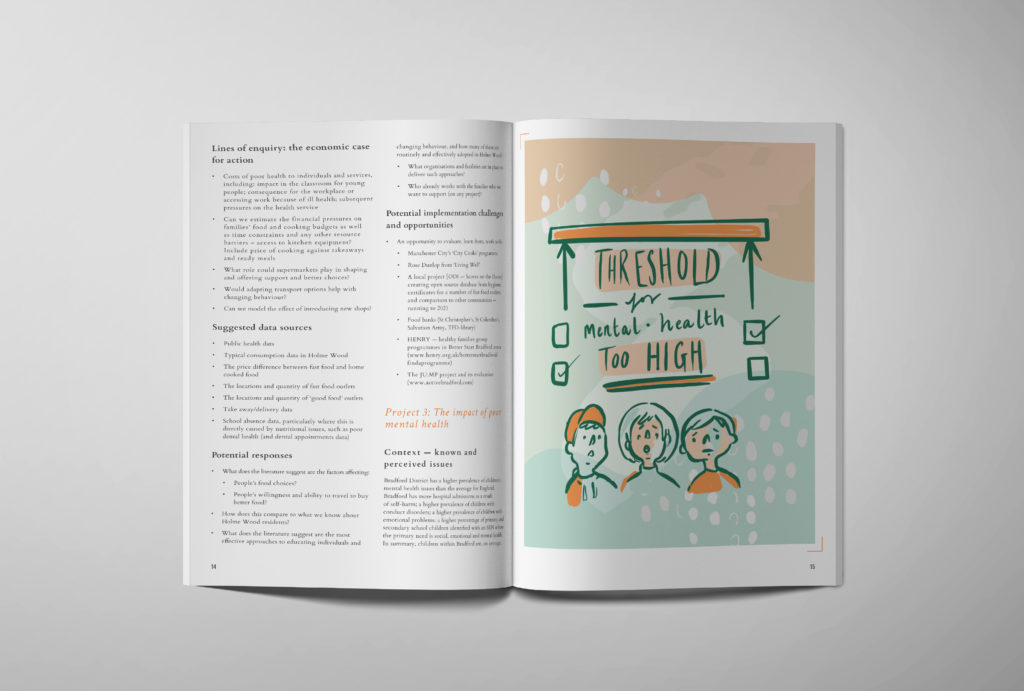Act Early x Buttercrumble
Cultural Sector Partner: Buttercrumble
HE Partner: University of Leeds
Other Partners: UKPRP, The Alan Turing Institute, University of Bradford, Born in Bradford, Wolfson Centre for Applied Health Research, Bradford Opportunity Area, Bradford Everyone, Ministry of Housing Communities & Local Government and Department for Education
For further information, please contact Abigail Baldwin (abigail@buttercrumble.com)
Creative studio, Buttercrumble, partnered with the University of Leeds to produce creative content as part of the Act Early initiative, funded by UKPRP and the Alan Turing Institute. The Holme Wood neighbourhood in Bradford was the focus of the initiative. It revealed how data science can be used to strengthen the understanding of a place by supporting the community and their needs.
The project began with visual note-taking at the Act Early conference. There, Chloe and Abigail Baldwin (of Buttercrumble) listened to groups who gathered to discuss topics concerning Holme Wood and the neighbouring suburbs. They documented the concepts and research discussed on iPads through illustration. The groups involved were data scientists, local citizens and key workers within the community, so multiple viewpoints were expressed.
As the illustrating happened live, Buttercrumble had to move quickly to capture insights. Therefore, this method is an effective way to gain an overall consensus or feeling about a scenario. It acts as a temperature check.
Act Early’s challenge was to communicate abstract and complex academic research inclusively. Visual note-taking aids understanding of intricate concepts and acts as a great marketing tool too. It can promote the positive impact of conducting research. Ultimately, illustration can express the intangible in a visual way that photography cannot.
Furthermore, the only limit to illustration is your imagination. It can open the mind due to the diverse and endless possibilities that can be conveyed. It also breaks down the barrier of language, allowing everyone to make use of it. For these reasons, imagery is still a vital tool for communication in this modern age. Just think of weather forecasts, maps and clothing labels.
Following the conference, Buttercrumble compiled the illustrations into a report to act as a vehicle for the research. It was designed to inform and inspire the readers: stakeholders and key decisionmakers. It offers communities a voice and helps shape local services for the future. Buttercrumble engaged on this project, with thanks to Dr Faisal Mushtaq who stated: “I feel the best part of [the project] is the legacy”. Dr Mushtaq trusts the illustrations “will ensure a long-lasting memory” and “it has been critical for effective communication to stakeholders” of the Act Early project.
Abigail of Buttercrumble believes: “it’s important culture and academia can collaborate to face challenges in a creative way, backed by strong research. This combination allows innovation and a better future for everyone”.
The collaboration meant the involved organisations had outputs and visual evidence of their activities. It offered something engaging and tangible that they could use to communicate more effectively.
Back to Case Studies


